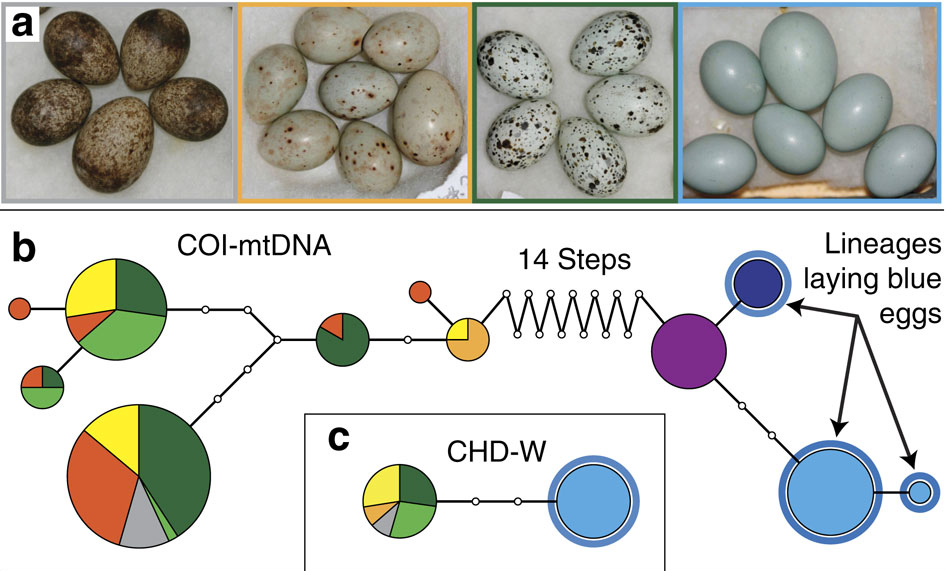Ancient origin of blue cuckoo eggs
How is egg color inherited in brood-parasitic common cuckoos (Cuculus canorus)? A study recently published in Nature Communications give answers, and has an interesting relationship to DNA barcodes.
The authors, fronted by Frode Fossøy at the NTNU Department of Biology, analyzed both mitochondrial and nuclear markers in a wide geographical range of cuckoo populations including several closely related species. They found unambiguous evidence for maternal inheritance of egg coloration in the brood-parasitic Cuculus canorus. Moreover, they showed that the blue egg color of C. canorus parasites on redstarts (Phoenicurus phoenicurus) originated around 2.6 MYA, in an ancestral mitochondrial lineage shared between the subspecies C. c. canorus and C. c. bakeri. This lineage is genetically divergent from and even paraphyletic compared other C. canorus populations and related Cuculus species.
 Partial figure from Fossøy et al. (2016) showing haplotype relationship between C. canorus populations laying differently colored eggs. DNA barcodes (b) and part of female specific w-chromosome (c).
Partial figure from Fossøy et al. (2016) showing haplotype relationship between C. canorus populations laying differently colored eggs. DNA barcodes (b) and part of female specific w-chromosome (c).
So what is the relationship with DNA barcodes? Well, the deep genetic divergence between populations of C. c. canorus was initially detected through a decent library of partial COI-sequences (barcode region) and triggered further analysis of other markers to determine the evolutionary history of this phenomenon. This time, divergent DNA barcodes did not indicate cryptic species, but helped placing a most interesting piece in cuckoo evolution puzzle.
Fossøy, F. et al. 2016. Ancient origin and maternal inheritance of blue cuckoo eggs. Nature Communications 6:10272 doi: 10.1038/ncomms10272.

 English
English  Norwegian Bokmål
Norwegian Bokmål